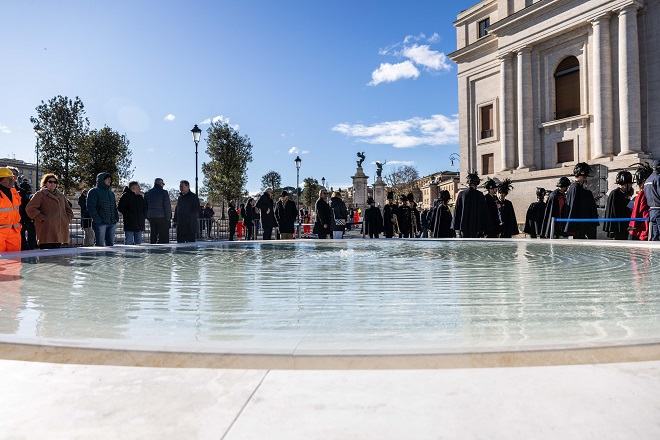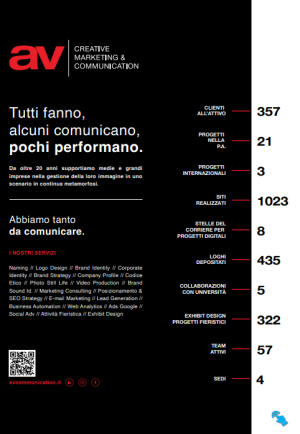For centuries, Piazza Pia was an unresolved urban node—a dilemma that engaged Popes, designers, and city institutions in solving the challenge of access to St. Peter’s Basilica and its connection with the Bridge and Castel Sant’Angelo. Here are the milestones marking the transformations of this emblematic place, from its origins as an anonymous traffic hub to its completely renewed urban definition.
During the Middle Ages, the area between Castel Sant’Angelo and Borgo was a square from which a porticoed road extended, cited in numerous documents from the 12th and 14th centuries but erased by subsequent changes in the urban fabric. The covered walkway provided pilgrims with shelter from the elements as they traveled to St. Peter’s Basilica. Major modifications began in the 15th century in anticipation of and in conjunction with Jubilees, events when Rome, then as now, embraced various urban adaptations to welcome throngs of pilgrims.
For the Jubilee of 1450, Pope Nicholas V planned a redesign of the area, though it remained unfinished. Later, Pope Alexander VI ordered the first demolitions of some medieval Borgo buildings, including a pyramid-shaped mausoleum—twin to the Pyramid of Cestius—to make way for a new road that would become the main pilgrim access to the Basilica. Indulgences were even granted to those who participated in demolishing the Vatican Pyramid. The road, named Via Alessandrina after the pope who promoted it, was inaugurated for the Jubilee of 1500 and soon came to be known as Borgo Nuovo, contrasting with Borgo Vecchio, the other primary route to St. Peter’s.
From the then Piazza Pia—then called Piazza Castello or Piazza di Borgo—three streets originated: the two leading through Borgo’s dense housing toward St. Peter’s and one toward Borgo Sant’Angelo. Between Borgo Vecchio and Borgo Nuovo lay the “Spina,” a block named for its elongated shape pointing toward the Tiber, with its base near St. Peter’s. The deep transformations of this area were chronicled in the 2016 Capitoline Museums exhibition “The Spina, from the Vatican Fields to Via della Conciliazione,” curated by Claudio Parisi Presicce and Laura Petacco, featuring diverse materials.
By the 17th century, with Gian Lorenzo Bernini’s colonnade, St. Peter’s Square took its final form, but the connection between the Spina and the area corresponding to today’s Piazza Pia remained contentious. Pope Paul V made the first aesthetic improvements by decorating the Spina’s front with the Mascherone Fountain after bringing the Acqua Paola to the Vatican. Yet 17th-century maps depict the square as a modest widening, devoid of notable buildings, intersected by the road from Ponte Sant’Angelo and descending steeply toward the Tiber past the Santo Spirito Hospital.
The area remained largely unchanged until 1852, when architect Luigi Poletti introduced two architectural facades on either side of the Spina’s tip. These twin facades, with travertine pilasters and capitals, clad the modest rear buildings, creating what Gianfranco Spagnesi called “one of the last urban Baroque-like scenes.” In 1875, the construction of embankments to contain the Tiber began, requiring demolitions along the riverbank, creating the Lungotevere, and drastically altering the city’s relationship with its river.
This arrangement, too, was short-lived. In 1911, Ponte Vittorio Emanuele II was inaugurated near Borgo Santo Spirito. While road connections to Prati were still under design, Piazza Pia itself was reshaped to accommodate vehicular traffic. The Spina was obliterated in 1936 following the Lateran Pacts, giving way to the new Via della Conciliazione, a visual manifestation of the reconciliation between Church and State and the grand new access to St. Peter’s Square from Castel Sant’Angelo.
Demolitions began at Piazza Pia, with Mussolini striking the first blow to the cornice of the elongated building marking the Spina’s tip. While the demolitions were completed in a year, reconstruction was slow, hampered by wartime financial strains. The layout, completed by 1950 for that year’s Jubilee, remained unchanged until 2023.
Today, tourists, pilgrims, and locals can admire Piazza Pia’s new face, transformed in just a year and five months. It has become a vibrant space in the heart of Rome, steps away from the Vatican, the picturesque Tiber with its bridges, and the magnificent dome of St. Peter’s Basilica.








